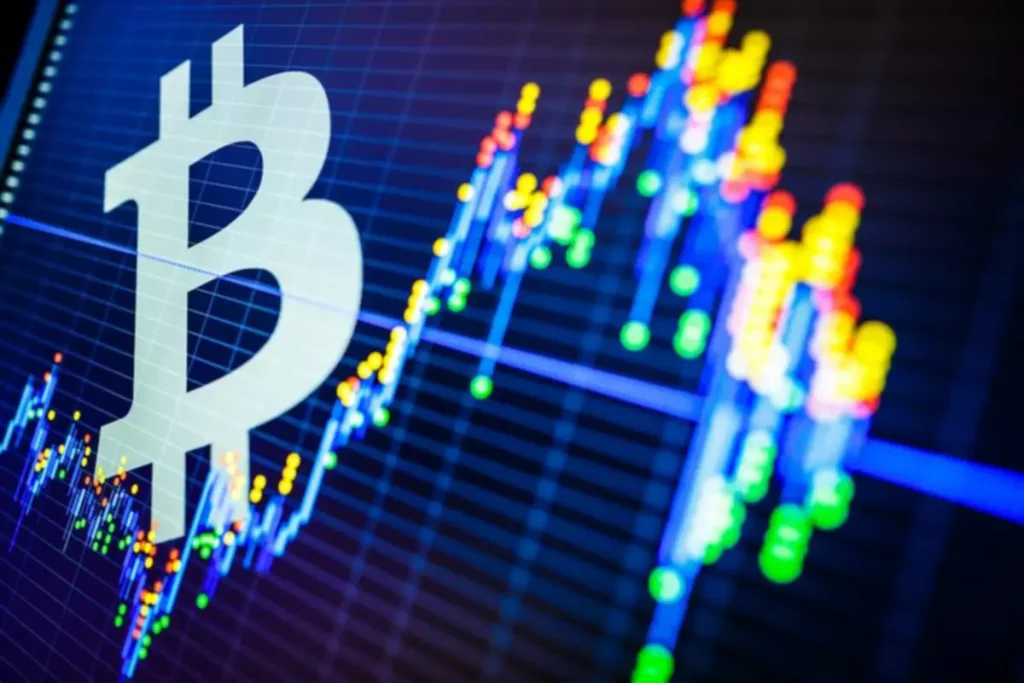Content
Traditional exchanges offer similar options, but the investments offered are subject to that exchange’s will and costs. As a decentralized model, there is no need for a central authority to approve or enable a transaction. Instead, the model is permissionless as the programmatic logic of smart contracts defines what is possible.
The benefits of a decentralized finance system stretch beyond online payments. Money transfer is just one aspect of the traditionally centralized financial system, but decentralized finance looks to replace every aspect, including exchanges, loans, insurance, and saving plans. The term decentralized finance, or DeFi for short, describes a financial system that operates without the need for traditional, centralized intermediaries. We’re used to everything going through a bank and other financial institutions like a global exchange, but DeFi creates a system that can function on its own. Similar to other digital assets, synthetics can be purchased, traded, and sold, somehow giving crypto users exposure to the traditional financial markets. For instance, synthetic versions of Tesla, Apple, and other major tech companies are currently available for trading on DeFi platforms.
The value of the cToken representation of the deposited asset is the mechanism of accounting for yield on lending for cryptocurrencies on the platform. Decentralized finance apps on Stellar are designed to provide users with a variety of financial services that do not require the intervention of a bank or regulatory authority. Apps can also offer services such as trading options, cryptocurrency loans, redemption services, wealth management options, and portfolio management options. Decentralized finance is an emerging alternative ecosystem of financial products. It builds on blockchain technology, the underpinning of cryptocurrencies, and relies on networks of computers around the world.
Top DeFi lending and borrowing platform: Compound Finance
Furthermore, any holder of a cryptocurrency supported on Aave’s platform can become a lender by depositing their cryptocurrency into liquidity pools from which borrowers will subsequently take loans. In return for their provided liquidity, lenders earn a percentage yield on their deposited cryptocurrency. With these two core user personas, the Aave ecosystem achieves an alignment of incentives that makes lending without an intermediary possible.
- Simply put, a smart contract is a digital contract that automatically self-executes based on the terms of the agreements that have been coded in.
- Any attempt at altering the contents of a block will alert all computers on the network .
- A Federal Bureau of Investigation alert issued in August 2022 warned that over $1 billion in assets had been stolen in just a three-month period.
- DeFi sidesteps the traditional pathways to making financial transactions.
- Decentralized finance apps on Stellar are also much safer than traditional financial institutions because they don’t need to use centralized IT systems to handle transactions.
- By using crypto wallets like Metamask, users can safely store their encrypted passwords and private keys, thus restricting access to the account’s owner.
Decentralized finance is an emerging financial technology based on secure distributed ledgers similar to those used by cryptocurrencies. Decentralized exchanges are a type of cryptocurrency exchange which allows for direct peer-to-peer cryptocurrency transactions to take place without the need for an intermediary. You could, through decentralized finance, secure a loan in a matter of minutes, without having to go through a complicated or restrictive application process.
What Are The Main Components of DeFi
DeFi is being designed to use cryptocurrency in its ecosystem, so Bitcoin isn’t DeFi as much as it is a part of it. Current laws were crafted based on the idea of separate financial jurisdictions, each with its own set of laws and rules. DeFi’s borderless transaction ability presents essential questions for this type of regulation.

In centralized finance, for instance, the Federal Deposit Insurance Corp. reimburses deposit account holders up to $250,000 per account, per institution if a bank fails. Moreover, banks are required by law to hold a certain amount of their capital as reserves, to maintain stability and cash you out of your account any time you need. While much of the attention and investment in decentralized technologies today is driven by speculation, the underlying value and impact of these technologies are critically important. Even in well developed economies, both the access to and quality of financial services one has access to is dependent on one’s socioeconomic class. For example, according to a 2019 survey by the FDIC, 22% of the United States are classified as unbanked or underbanked, with large swaths of that population being those with lower income or less education. Think of it this way, in today’s financial system, any type of banking transaction requires multiple layers of approvals and processing can take days.
Sometimes also referred to as synths, synthetic assets are tokenized derivatives that mimic the properties of something else, usually commodities like precious metals or securities like stocks of major companies. The benefit of using DeFi over CeFi is that you have full control over your assets and own the key to your wallet. In this article, we’ll delve into the world of DeFi and explore its benefits and potential for revolutionizing the financial industry.
History of DeFi
Because the DeFi architecture is open on a transparent ecosystem, users themselves can check and control the functionality of the transactions they intend to participate in. When they stake their crypto assets into a liquidity pool, they lock them in so that one asset can be smoothly exchanged for another, thus ensuring low price volatility. This valuable service is called yield farming, and TVL represents the total value locked by liquidity providers into liquidity pools. Lastly, many protocols and services are new and are subject to technical or economical exploitation.

The four types of derivatives are – Option contracts, Future derivatives contracts, Swaps, Forward derivative contracts. The offers that appear in this table are from partnerships from which Investopedia receives compensation. Investopedia does not include all offers available in the marketplace.
A new dApp might take this one step further by combining the entire transaction chain. Rather than making each move on its own, someone could use the dApp to automate the process. DeFi projects generally have a mandate from their founders to create permissionless financial services that run on a decentralized platform. Developers can create https://xcritical.com/ smart contracts with protocols for specific uses, such as lending or borrowing money. In turn, other developers and dApps can reuse or build on these protocols. DeFi also gives users a way to generate income on their digital assets by contributing to lending pools which are used for offering collateral-backed loans to other users.
A blockchain is a distributed and secured database or ledger. Applications called dApps are used to handle transactions and run the blockchain. In July 2020, The Washington Post described decentralized finance techniques and the risks involved. In September 2020, Bloomberg said that DeFi made up two-thirds of the cryptocurrency market in terms of price changes and that DeFi collateral levels had reached $9 billion. Ethereum saw a rise in developers during 2020 due to the increased interest in DeFi. For example, a user can set up a smart contract to send specific amounts of cryptocurrencies to another wallet across regular intervals.
Decentralized Finance
And you can comfortably finance yourself in DeFi without having to go through mountains of paperwork — for a fraction of the cost and time than in traditional finance. In the DeFi space, users are given more control over their assets as you, and only you are the custodian of your crypto funds. By using crypto wallets like Metamask, users can safely store their encrypted passwords and private keys, thus restricting access to the account’s owner.
A Look at Cefi, Defi, and the Risks Associated With Decentralized … – hackernoon.com
A Look at Cefi, Defi, and the Risks Associated With Decentralized ….
Posted: Fri, 16 Dec 2022 08:00:00 GMT [source]
Second, it has grown through crowd-funding models called ICOs , as with Dogecoin, which makes it particularly nimble for attracting funding for projects. However, opponents advocate that it’s still like a niche market with significant risk elements. The possibility of fluctuating transaction rates on the ethereum blockchain making trading expensive in the future is an example of its disadvantages.
What is DeFi?
This token, which is used for running Compound, can also be traded on cryptocurrency exchanges. Smart contracts in the decentralized finance system make peer-to-peer, decentralized insurance possible too. Everything happens autonomously, with smart contracts ensuring a fair, secure, and trustworthy process. Ethereum is the second-largest cryptocurrency and a decentralized finance giant.
Today, you might put your savings in an online savings account and earn a 0.50% interest rate on your money. The bank then turns around and lends that money to another customer at 3% interest and pockets the 2.5% profit. With DeFi, people lend their savings directly to others, cutting out that 2.5% profit loss and earn the full 3% return on their money.
All blocks are encrypted, and once they’re closed, the contents of the block are permanently sealed and cannot be changed. Any attempt at altering the contents of a block will alert all computers on the network . This is what makes a blockchain virtually impenetrable and safe. Another class of service offered by DeFi is asset management. It intends to make investing faster, less expensive, and more democratized.
How do decentralized finance apps work on Stellar?
The easiest and safest route would be to invest in stocks of companies that are involved in DeFi development. However, many of these companies are new and operate in the cryptocurrency space, making them quite a bit more speculative and volatile than better-established companies in mature industries. There is no FDIC backing to protect your funds should a major glitch, error, or cyber hack make your funds unavailable or cause them to disappear.
Benefits Of DeFi
It is good since it creates a financial system that is creative, open, global, fast, and transparent. In addition, it’s more user-facing, user-oriented, or user friendly because of features like democratizing nature, optimized transaction cost, open finance vs decentralized finance and low barriers to participation. DeFi coins like AAVE, Cosmos, Decentraland, and Polkadot are available on a 24/7 basis. Decentralized finance, while intriguing, has a variety of obstacles and limitations before reaching its best extent.
Contributes to decentralized hedge funds in the form of decentralized cryptocurrency hedge funds. Proof Of StakeProof of Stake mining is a consensus mechanism that validates blocks and transactions to secure a Cryptocurrency blockchain. In PoS, coin owners stake their coins to become a validator. Unlike the proof-of-Work system, where users compete for their chance to append the blockchain, validators are selected at random in PoS depending on the user’s stake. Hence, It connects non-blockchain-based assets to the crypto ecosystem.
